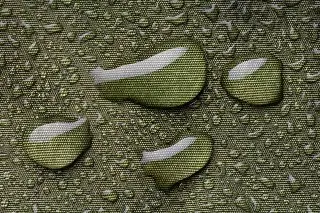Coated fabric
The coated fabric is a type of material that has been treated with a layer of polymer or other substances to enhance its properties. The coating may be applied to one or both sides of the fabric, depending on the intended use and desired performance characteristics.
One of the primary benefits of using coated fabrics is increased durability and resistance to wear and tear. The coating can help protect against abrasion, punctures, and other types of damage that might otherwise compromise the integrity of the material. This makes coated fabrics ideal for use in applications where strength and longevity are critical factors, such as in outdoor gear like backpacks, tents, and tarps.
Another advantage of coated fabrics is their ability to resist water penetration. By sealing off the pores in the textile fibers with a waterproof coating, these materials become highly resistant to moisture infiltration. This makes them useful for creating items like raincoats, umbrellas, and boat covers that need to remain dry even when exposed to heavy rainfall or water spray.
Coated fabrics also have some limitations that should be considered before selecting them for use in any particular application. For example, some coatings may reduce breathability or flexibility compared to uncoated materials which can cause discomfort during prolonged usage periods.
Nevertheless, advancements in technology have allowed manufacturers to develop new coatings that address many common issues associated with traditional coatings while still maintaining desirable performance characteristics like durability and waterproofing abilities.
Types of coated fabric
The coated fabric is a type of material that has been treated with a coating or lamination process to improve its performance and durability. There are several types of coated fabrics available in the market today, each with its unique features and properties.
Polyurethane-coated fabric
One common type of coated fabric is polyurethane-coated fabric. This type of fabric is made by applying a thin layer of polyurethane onto a base material such as nylon or polyester. The resulting product is soft, lightweight, waterproof, and breathable. It's commonly used for outdoor gear like tents, rain jackets, and backpacks.
PVC-coated fabric
Another popular form of coated fabric is PVC-coated fabric which involves adding plasticizers to form a flexible coating over the base cloth. PVC-coated fabrics have excellent resistance to water penetration making them perfect for use in industries like construction where waterproofing is necessary.
Teflon-coated fabric
Teflon-coated fabrics are also widely used due to their non-stick properties which make them ideal for industrial applications as well as food packaging materials. These coatings are applied using various techniques such as spraying or dipping.
Acrylic-coated fabric
Acrylic-coated fabrics offer superior tear strength while still being lightweight making them perfect for outdoor sports equipment such as kites, sails, and parachutes.
Silicone rubber coated
Silicone rubber coatings provide high-temperature resistance coupled with chemical stability making them suitable for use in harsh environments like oil rigs and pipelines.
Lastly, there are Coating blends that involve combining two or more types of coatings together on one piece of fabric resulting in improved durability compared to other individual coating options mentioned above.
Coating technology has come a long way over the years providing enhanced performance capabilities across numerous sectors including automotive textiles, technical textile applications, etc. With innovations continuing at breakneck speed we can expect even more advanced forms emerging from time to time along with these existing ones catering to different needs & requirements.
Conclusion
Overall, coated fabrics offer numerous advantages over non-coated textiles due primarily due to their enhanced protective capabilities along with improved weatherproofing features making them suitable for various purposes ranging from apparel manufacturing to industrial applications such as roofing membranes used extensively by architects worldwide today!









0 Comments